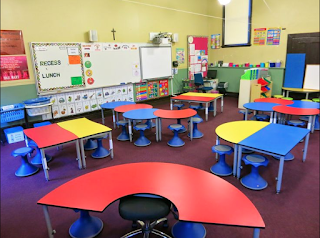Researching Genius Hour was something that was extremely beneficial for me to do as an educator. I was always interested in the topic and intrigued by my colleagues who complete it within their own classroom. I had some mixed ideas and notions about this topic and now that I completed the research, I've been able to make an educated opinion. I interviewed our technology specialist from Central York, Mrs. Amy Musone. She has experience teaching all different grade levels and has a great deal of experience. I learned so much from our interview with one another. The interview was completed via Zoom.us
Below, you will find a link to my Powtoon on Genius Hour. This is a video that I completed to share my information learned about the topic. It was amazing to read various blogs and research supporting Genius Hour. I did a great deal of searching and had some difficulty finding negatives. Some teachers who decided to not use Genius Hour within their classroom decided to call it something different and restructured it to fit their own needs. They still conduct research on Passion Projects but in a little different format.
Please pay special attention to the following resources for Inquiry-Based Learning Activities.
- Evaluating the Use of Inquiry-Based Activities: Do Student and Teacher Behaviors Really Change? -Cianciolo, Jennifer; Flory, Luke; Atwell, Jonathan – Journal of College Science Teaching, 2006 https://eric.ed.gov/?q=inquiry&pg=3&id=EJ752661
- Inquiry-Based Instruction: Does School Environmental Context Matter? – Pea, Celestine H. – Science Educator, 2012 https://eric.ed.gov/?q=inquiry&pg=3&id=EJ977455
Sustaining Digital Literacy Course Reflection
What do I know now that I didn't know before this course?
- I learned how to use Zoom.us for the interviewing part of Unit 7. This is an awesome tool that I plan to use in the future! It allowed me to connect with another educator in my district and record the interview. It was super simple to use!
- I learned how to use Powtoon for the final project. It was easy to navigate and fun to create a video. It was difficult at times to get the timing just right, but overall, a very neat program that I never used before this course. It was a little limited with the images provided with the program. I know I can add outside images too, but decided not to go that route due to copyright.
- I learned a bit more about different games my classmates were using within their classroom. I learned how the implement both traditional and digital games. I also learned a bit more about Class Dojo as I used it many years ago. I didn’t really care for it, but my peer who has used it this year seems to love it. I plan to check it out and learn more about it!
- I also learned about Genius Hour, which was something I was very interested in. I learned from my research, but also from interviewing a colleague who has implemented it in the past. This was a huge learning component of this course!
What can I do now I couldn't do before?
- I know how to make my blog more “readable” in ways of adding links to useful ideas I’m discussing, using my own voice, along with adding pictures to make it more visually appealing. I’ve used my blog before, but the comments received on how to make it better were very important and helpful!
- I know how to create a Powtoon now and I had never used this program before. It might be something I will use with my third graders! I also learned how to use Zoom.us to connect with other educators.
- I learned about how valuable the Flipped Classroom can be and the impact I can make by creating short videos to preview concepts with my students. I learned that it is important to show your face in this type of video as it makes them more personable. Students want to see me as their teacher, not just a screen showing them how to do a task.
Why does it matter?
This entire class made a huge impact on my teaching this year. First, I really liked that assignment of rearranging my classroom to make it more of a 21st Century feel. My students loved the small changes I made and I’ve kept them. I also think that learning about the Flipped Classroom was incredibly useful. I enjoyed this unit because I had to make a video to use with my students. It is something that I’d like to try in my classroom in the near future. Finally, I think learning about Genius Hour for my final project is something that I will take with me for many years to come. Implementing Genius Hour within my classroom is something I was worried about doing. After doing the research, I truly believe that it could work with my third graders. I need to directly model open-ended questions and teach them how to evaluate resources. These were the units that really mattered to me and I found useful.
Images Taken From:
https://i1.wp.com/theteacherbag.com/wp-content/uploads/2017/05/genius-hour.png?resize=775%2C450&ssl=1
http://blogs.ubc.ca/inquiryandinnovation/files/2015/02/caution.png
http://www.iblinstitute.com/sites/all/themes/hermio/images/inquire.gif


















